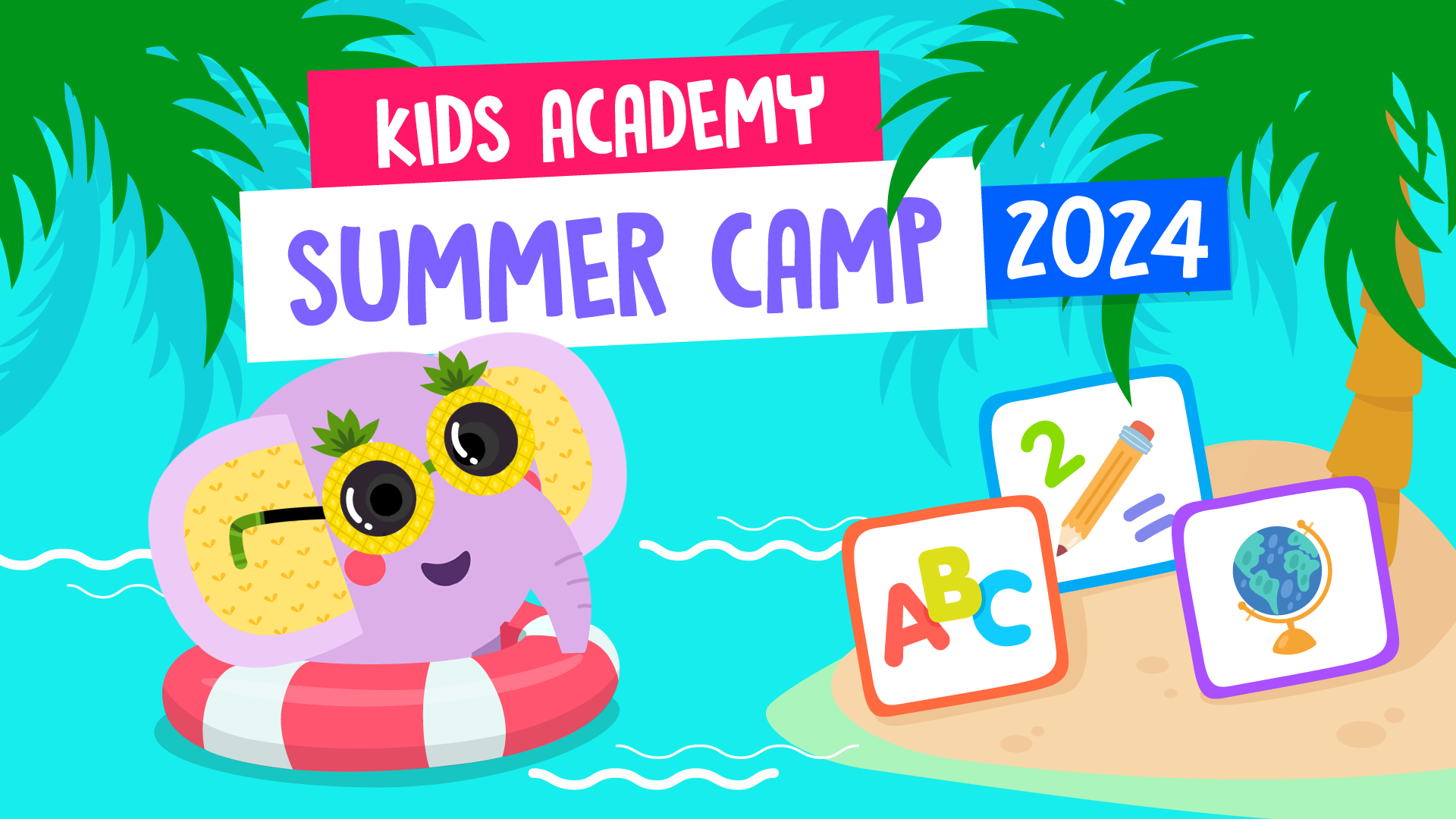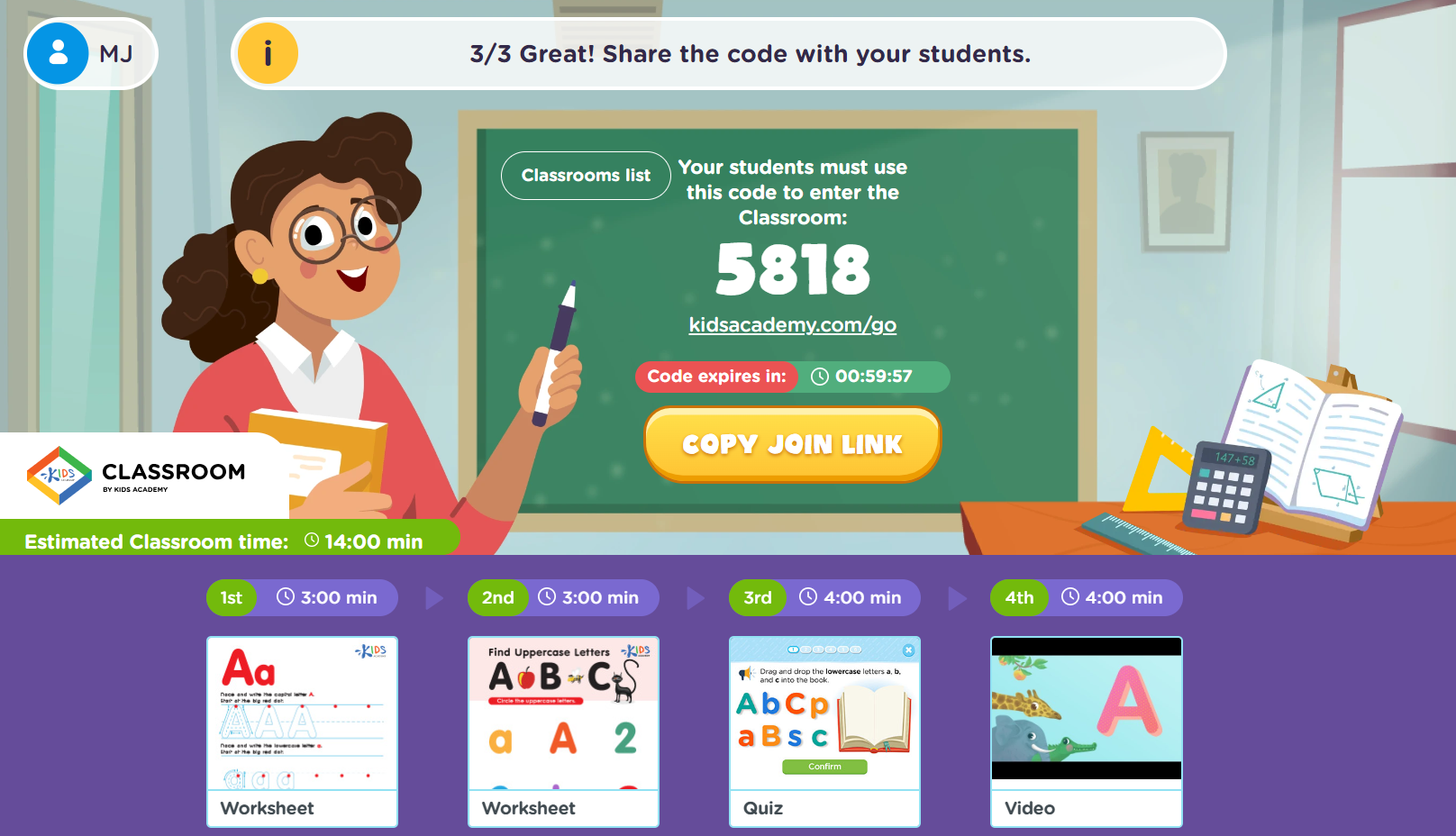Understanding forces Worksheets for Ages 7-9
6 filtered results
-
From - To
Discover our engaging "Understanding Forces" worksheets tailored for children ages 7-9 at Kids Academy! Designed to blend fun and education, these worksheets introduce young learners to key concepts such as gravity, friction, and magnetism. Through interactive and colorful activities, kids explore how forces impact their world, fostering critical thinking and problem-solving skills. Each worksheet is crafted to align with school curricula, ensuring your child builds a solid science foundation while enjoying their learning journey. Perfect for both classroom use and home practice, our worksheets make mastering the basics of forces an exciting adventure!
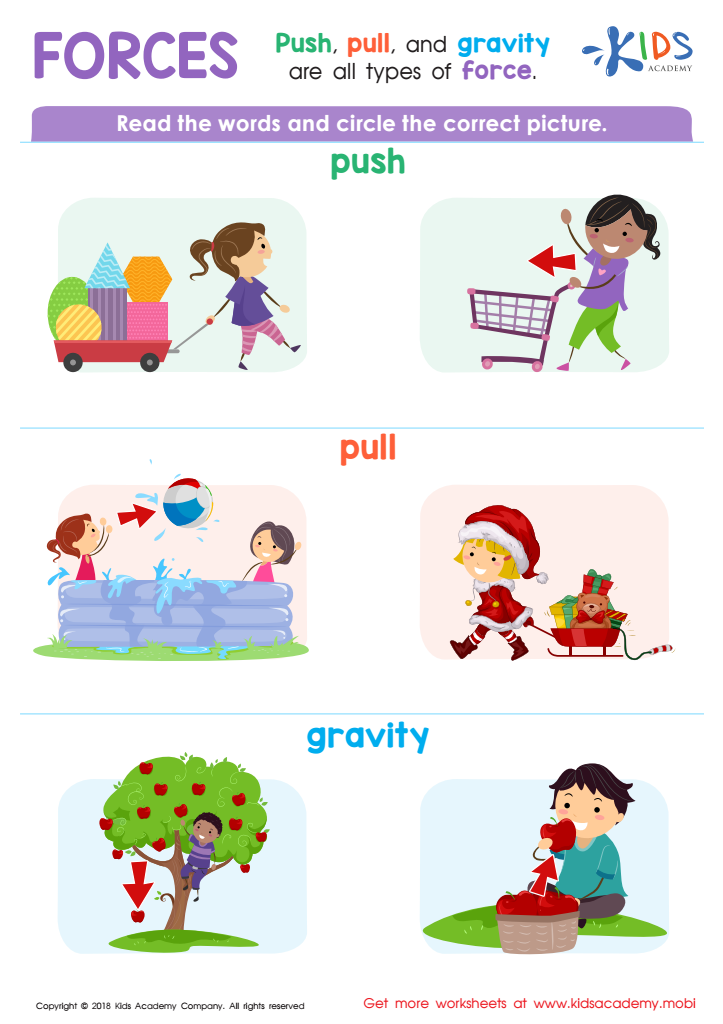

Forces Worksheet
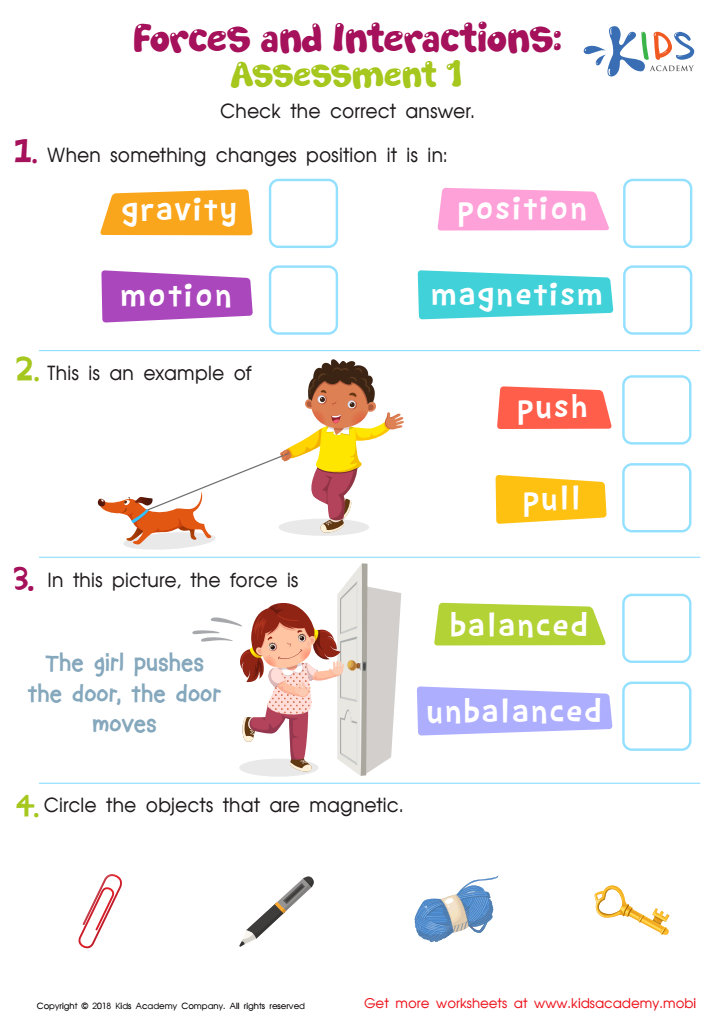

Forces and Interactions Printable
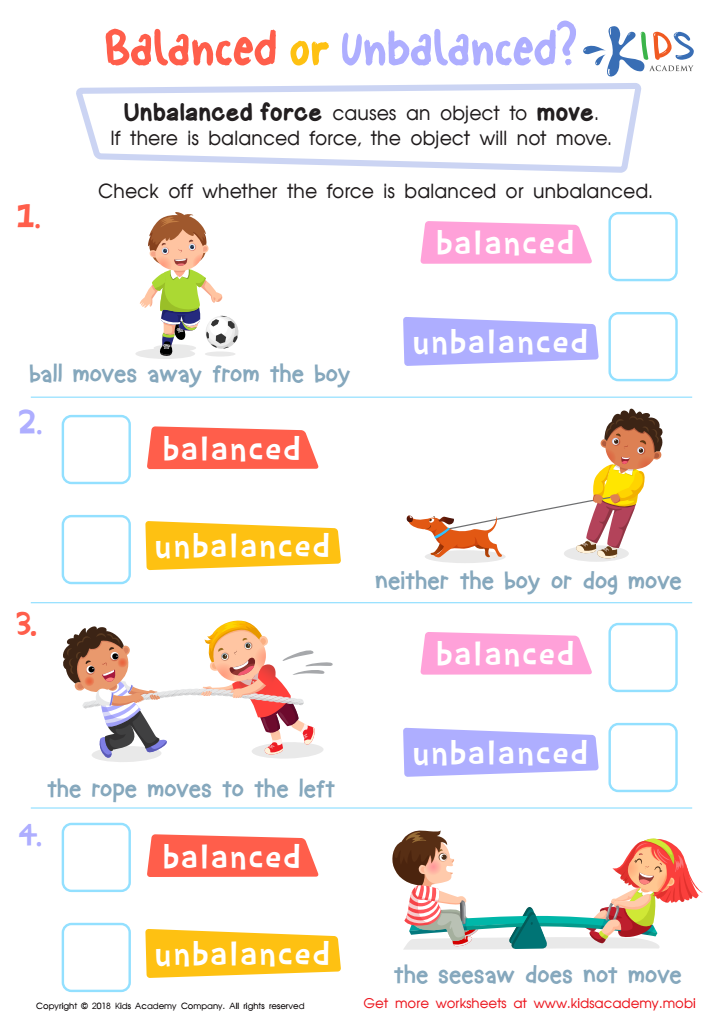

Balanced or Unbalanced Science Worksheet
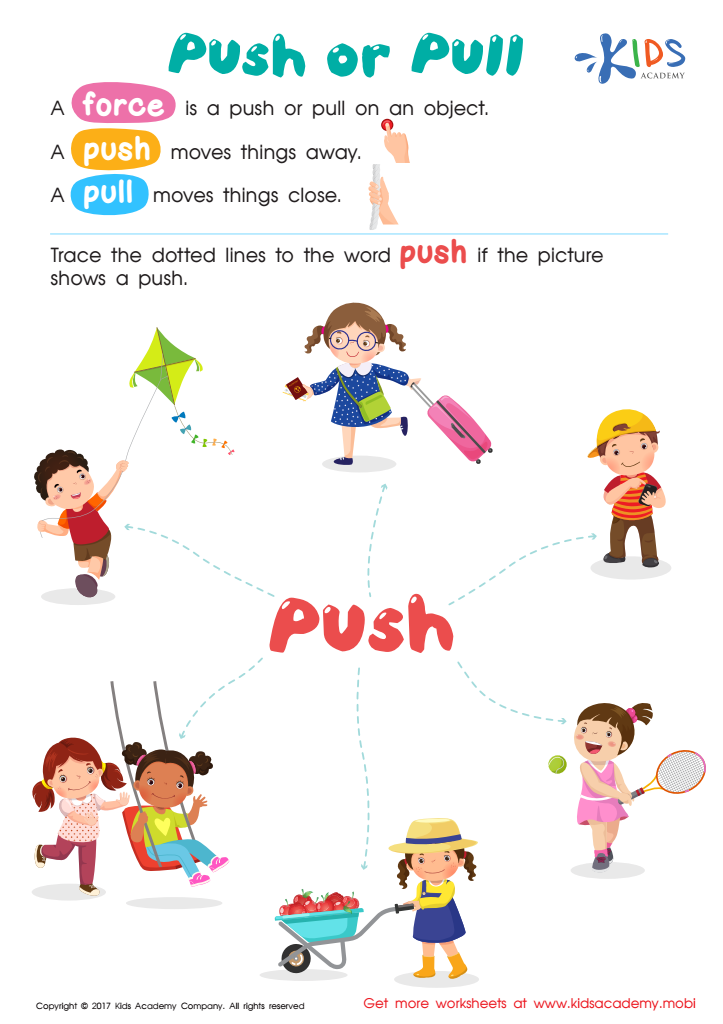

Push or Pull Worksheet
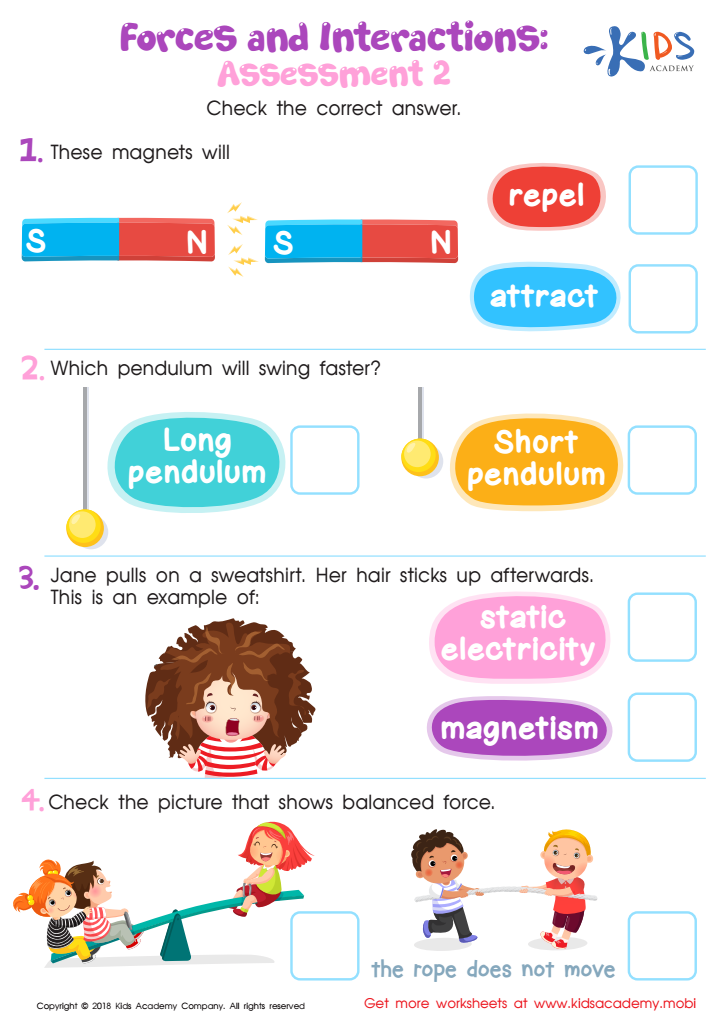

Forces and Interactions Worksheet For 3rd Grade
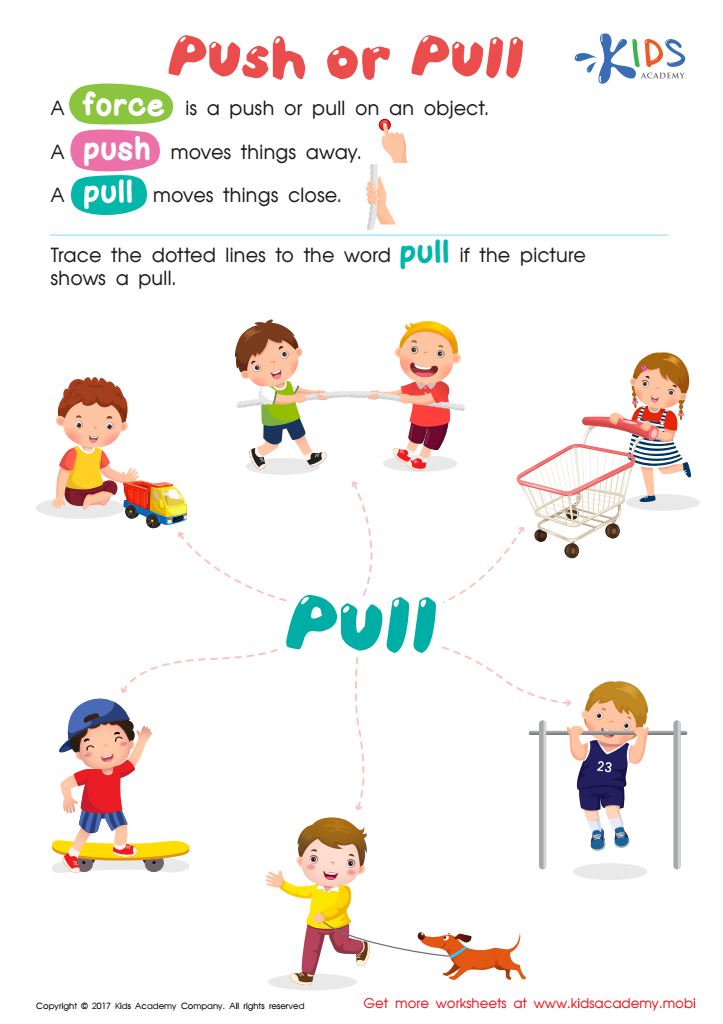

Pull or Push Worksheet
Understanding forces is crucial for young learners, particularly those aged 7-9, because it lays a foundation for comprehending the physical world around them. At this age, children are naturally curious and constantly ask questions about how things move or why they fall. Introducing them to the concept of forces can ignite a lifelong interest in science and learning.
When children understand forces, they can begin to grasp more complex scientific principles in later years. It makes them aware that there are invisible pushes and pulls, like gravity, friction, and magnetism, that govern how objects behave. Such knowledge can demystify everyday occurrences, whether it's why a ball curves when thrown or how a magnet sticks to a refrigerator.
Furthermore, learning about forces fosters critical thinking and problem-solving skills. Kids get to perform hands-on experiments, like building simple machines or testing various surfaces for friction, which make them active participants in their education. This approach makes learning interactive and fun, aiding in better retention of concepts.
Parents and teachers play a vital role in introducing these concepts early, setting a solid educational foundation. When children know how the world works, they are more confident in questioning, discovering, and understanding newer concepts, both in academics and in everyday life.

 Assign to My Students
Assign to My Students






